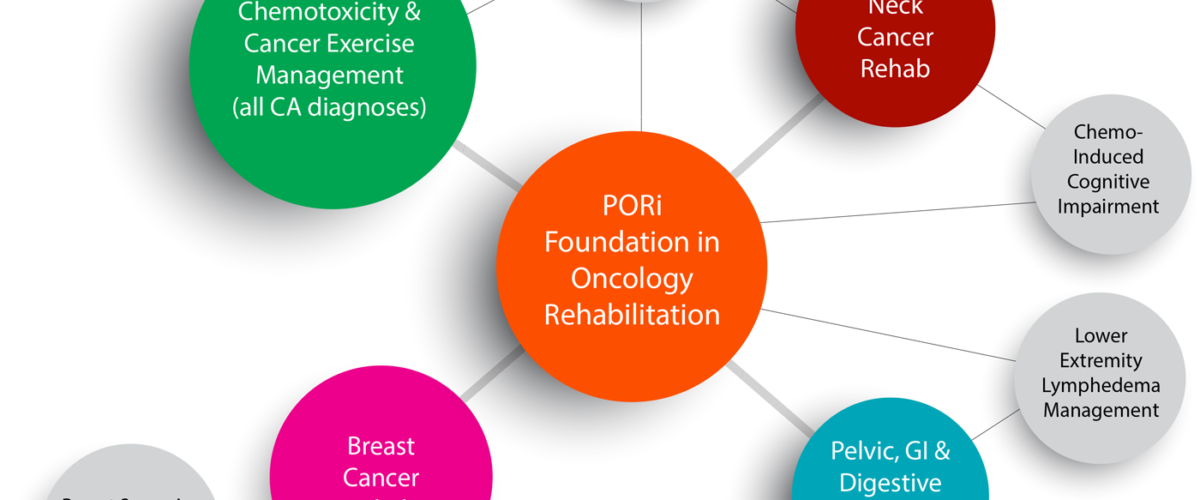ANTIOXIDANT ACTIVITIES OF ETHANOL EXTRACTS OF MANGOSTEEN PEEL (GARCINIA MANGOSTANA L.) ON SHEEP RED BLOOD CELLS UNDERGOING IN VITRO OXIDATIVE STRESS Dwi Ratna Sari H1, Muhammad Arsyad Subu2, Rahmawati Ridwan3, Rani Sauriasari4, Imam Waluyo5, Slamet Soemarno6, Sarosih Sarkosih7
Antioxidant Activities of Ethanol Extracts of Mangosteen Peel (Garcinia Mangostana L.) on Sheep Red Blood Cells Undergoing In Vitro Oxidative Stress
Dwi Ratna Sari H, Muhammad Arsyad Subu, Rahmawati Ridwan, Rani Sauriasari, Imam Waluyo, Slamet Soemarno, Sarosih Sarkosih
1Universitas Binawan – Jakarta Indonesia 2University of Sharjah-United Arab Emirates & Universitas Binawan – Jakarta Indonesia 3Universitas Indonesia 4Universitas Indonesia 5-7 Universitas Binawan – Jakarta Indonesia
dwirahan@gmail.com
Abstract
Mangosteen peel (Garcinia mangostana L.) has been used as a traditional medicine as an antioxidant for various diseases. The purpose of this study was to assess the ability of 50% mangosteen peel ethanol extract (EEMP) with a concentration of 0.195% to resist oxidative stress in sheep red blood cells (SRBC) which is given tBHP in vitro. The experiments were carried out in 4 groups, (I) controls, (II) SRBC + EEMP, (III) SRBC + t-BHP, (IV) SRBC + EEMP + t-BHP. The effect of protecting the mangosteen peel is determined by measuring the parameters of the activity of antioxidant enzymes superoxide dismutase (SOD), glutathione peroxidase (GPx) and catalase. The results showed that administration of EEMP was able to withstand oxidative stress in SRBC which is given TBHP. This is indicated by the decrease in SOD, GPx and catalase activities in the provision of ECD. The results of this study indicate that EEMP can protect SRBC from oxidative stress caused by the administration of t-BHP.
Keywords: Ethanol extract of mangosteen peel, Glutathione peroxidase, Catalase, Sheep red blood cell, Superoxide dismutase.
Introduction Indonesia is rich in various kinds of plants that are useful for the various treatments of health condition. Serious health problems caused by lifestyle changes due to globalization are risk factors of degenerative diseases. This situation is exacerbated by pollution, lack of rest, rarely doing sports activities and high stress. According to the World Health Organization (WHO), Indonesia ranks fourth as the most diabetes mellitus patients in the world. Stroke is also one of the causes of vascular disease which according to WHO data is the third largest killer disease after heart and cancer. This disease has attacked the young generation and if not treated immediately can have fatal consequences such as death and disability. Various studies have shown that these degenerative diseases are associated with increased free radicals in the body that cause oxidative stress in cells (Handayani A, et al, 2007).] Mangosteen (Garcinia mangostana L.) is a fruit plant originating from shady tropical forests in Southeast Asia, mostly in Indonesia and Malaysia (Bappenas, 2005). From Southeast Asia, this plant spreads to Central America and other tropical regions such as Sri Lanka, the Caribbean, Hawaii and Northern Australia. In Indonesia, mangosteen is called in
different local names such as manggu (West Java), manggus (Lampung), manggusto (North Sulawesi), manggista (West Sumatra) (BAPPENAS, 2005). In other countries, t is also known as mangostanier (French), mangostán (Spain), mangostão (Portuguese), mangostane (German), mangkhut (Thailand), mang cutan (Vietnam), mongkhut (Kampuchea), mangostan (Philipines) and mangostin (India) (Osman & Milan, 2006). This plant belongs to the family Clusiaceae (Guttiferae synonym) which consists of 35 species and more than 800 species (Osman and Milan, 2006). In Southeast Asia, mangosteen peel has been used to treat skin wounds and infections for several centuries, amoebic dysentery. In Ayurvedic medicine it has been used to treat inflammation and diarrhea, cholera and dysentery (Laurance, 2011; Chaverri et al, 2008). In addition, it was found that the mangosteen peel contains several compounds that had pharmacological activities such as anti-inflammatory, antihistamine, antibacterial, antifungal and antiviral drugs and it was useful to treat heart disease. Some of main compounds in the mangosteen peel which are reported to be responsible for some pharmacological activities are the xanton group. The xanthone compounds that have been identified include α-mangostin 1, 3, 6 – trihydroxy – 7 – methoxy – 2, 8 – bis (3- methyl -2 – butenyl) – 9 H – xanten – 9 – on and γ – magostin 1,3, 6,7 – tetrahidroxy – 2,8 – bis (3-methyl2-butenyl) – 9 H xanten-9-on (Nugroho, AE). Some other pharmacological effects are as antihistamines, anti-inflammatory, antioxidants, anti-cancer, and anti-microorganisms. A study showed crude methanol extract from mangosteen peel has an effect as antiproliferative, apoptotic and antioxidant on human breast cancer cell line (SKBR3) as a model (Moongkarndi P et al, 2003). Various studies indicated that the mangosteen has potential antioxidant power that can reduce the risk of various diseases so-called “queen of fruits” or “superfruit”. The mangosteen peel contains 95% xanton, isoflavonoids, tannins and flavonoids (Vishnu Priya V, et.al, 2010). Activity tests on the isolation of mangosteen peel showed that most of active compounds were alpha-mangostin, gamma-mangostin and garsinon-E (Nugroho, 2007). These compounds belong to the xanton group. Further research shows that mangosteen peel extract and its active compounds have potent antioxidant activity, effective as antiaterosclerosis, and even anti HIV (Nugroho, 2007). In the toxicity test, the ethanol extract of mangosteen fruit containing xanton active compounds do not show toxicity both acutely and subchronically (Nugroho, 2007). A study conducted by Moongkarndi et al., 2004 shows that methanol extract from mangosteen peel has antiproliferation, antioxidant effects and induces apoptosis. Weecharangsan et al., 2006 followed up on the results of the study and proved that some mangosteen peel extracts or water extract that contains 50% ethanol and 95%, and ethyl acetate have antioxidant properties. Recently, the use of mangosteen peel extract is increasingly widespread in Indonesian community, especially the efficacy of antioxidants. Studies on benefits of mangosteen peel as an antioxidant is also increasing in Indonesia. Some studies in Singapore and Malaysia show that the antioxidant properties of mangosteen peels are far more effective than antioxidants in the skin of rambutan or durian (Tan Tze Guan, Matthew Whiteman, 2005). The xanthone content and its derivatives can effectively fight in-vitro breast cancer and heart disease drugs (Tan Tze Guan, Matthew Whiteman, 2005). The efficacy of xanthone derivatives called garcinone E is considered to be more effective in inhibiting cancer when compared to cancer drugs such as fluorouracil, sisplatin, vincristine, methotrexate and mitochondantron (Tan Tze Guan, Matthew Whiteman, 2005). Several in vivo studies have demonstrated that the antioxidant ability of mangosteen peel to resist membrane oxidation based on the results of lipid peroxidation test. But its ability is not yet well known to protect red blood cells from oxidative stress. For this reason, a study using SRBC induced by t-BHP as a model and its protective effect was examined by
measuring the activity of endogenous enzyme SOD (superoxide dismutase), GPx (glutathione peroxidase) and catalase. The purpose of this study was to examine the effect of giving mangosteen peel ethanol extract (Garcinia mangostana L.) to sheep red blood cells made by oxidative stress with t-BHP in vitro. The specific objective of the study was to measure SOD, GPx and catalase activity in sheep red blood cells made with oxidative stress by t-BHP. Our hypothesis is that ethanol extract of mangosteen rind (EEMP) has efficacy as an antioxidant and is able to maintain sheep red blood cell membranes from oxidative stress conditions due to being given t-BHP.
RESEARCH METHODOLOGY This research was conducted in the laboratory of the Department of Biochemistry and Bio molecular, Faculty of Medicine, University of Indonesia and in the Phytochemical Laboratory of the Faculty of Pharmacy, University of Indonesia, Depok, and Jakarta in Indonesia. The study was carried out experimentally — in vitro with a completely randomized design. In this study, parameters observed were measurements of superoxide dismutase (SOD) activity, glutathione peroxidase (GPx) activity and, catalase activity in red blood cells of sheep given oxidative stress with t-BHP.
Tools and Materials In this study, tools used are analytical scales (OHAUSS), magnetic stirrers, desiccators, spectro-photometers (GENESIS), volume pipettes, Eppendorf pipettes, measuring flasks (PYREX), test tubes (PYREX), Erlenmeyer (PYREX), alarm glasses (PYREX), incubators (MEMMERT ), centrifuges (®Hettich), pH meters (HANNA), refrigerators, stopwatches, Pasteur pipettes, blood tubes EDTA Grainer 3cc, vortex (JULABO), Homogenezer (YAMATO), glass cuvettes, ovens, furnaces, filter paper and thermometers. In addition, the chemicals used were reagents (Dragendorff, Mayer and Bouchardat), ammonium hydroxide, hexane, 10% sulfuric acid, gelatin, tea powder, ethyl acetate, concentrated hydrochloric acid (HCl) solution, standard quercetin, methanol solution, plate Thin layer chromatography (TLC), AlCl3 solution, potassium iodide powder, NH4OH solution, ether, distilled water, H2SO4 solution, NaCl, PBS 0.1 M pH 7.0 and pH 8, t-BHP (MERCK), H2O2 10 mM, Potassium dihydrogen phosphate / KH_2 PO_4 (MERCK), Dikalium hydrogen phosphate / K2HPO4 (MERCK), Sodium chloride / NaCl (MERCK), Potassium chloride /KCl (MERCK), Calcium chloride / CaCl2 (MERCK), Magnesium sulfate /MgSO4 (MERCK) , Natium dihydrogen phosphate / NaH2PO4 (MERCK), Sodium hydrogen phosphate / Na2HPO4 (MERCK), SOD Kit (RANDOX), GPx Kit (RANDOX). In this study, test material used was the ethanol extract of mangosteen peel (Garcinia mangostana L.) made at the Laboratory of Spice and Medicinal Crops Research Institute (BALITTRO), Cimanggu Bogor Indonesia. In order to obtain the ethanol extract of mangosteen peel, the extraction process was carried out by maceration method using 50% ethanol solvent. The extraction results were examined using standard extract parameters at the Phytochemical Laboratory Faculty of Pharmacy, University of Indonesia. Examination of the standard extract parameters performed consists of both standard non-specific and specific standard extract parameters. The standard parameters of non-specific extracts include drying losses, water activity, ash activity, acid insoluble ash and residual solvent activity. Specific extract standard parameters include extract identity, organoleptic, ethanol-soluble compound activity, compound activity water soluble and phytochemical extract test. Sheep blood was taken from the Department of Microbiology FKUI. This SRBC was made a 50% suspension. Ethanol extract of mangosteen peel was carried out at the Laboratory of Spice and Medicines
and Crops Research Institute (BALITTRO), Cimanggu Bogor. Saline Phosphate Buffer Solution (PBS) 0, 05 M pH 7, 4 was carefully weighed in potassium dihydrogen phosphate (KH_2 PO_4) 3.45 g, dialium hydrogen phosphate (K_2 HPO_4) 9.35 g, Sodium Chloride (NaCl) 4.5 g. Then, they were dissolved in distilled water to a volume of 1000 mL. KrebsRinger Phosphate (KRP) solution pH 7.4 was carefully weighed in sodium chloride (NaCl) 3.506 g, potassium chloride (KCl) 0.179 g, calcium chloride (CaCl_2) 0.072 g, magnesium sulphate (MgSO_4) 0.072 g, nartium dihydrogen phosphate (NaH_2 PO_4) 1,138 g, sodium hydrogen phosphate (Na_2 HPO_4) 1,171 g. Then, they were dissolved in distilled water to a volume of 500 mL. Dosing dilution of the ethanol extract of mangosteen peel: The dose used in this study was 0.195% (1.95 μg / mL) based on the results of the optimization of catalase activity test. T-BHP 4 mM solution (BJ: 0, 94 g / mL; BM: 90, 12): Starting with dissolving 27, 4 µL t-BHP in KRP to a volume of 50 mL. Sheep blood obtained was centrifuged at a speed of 5000 rpm for ten minutes. After the plasma was removed, SRBC deposits were washed with phosphate buffered saline (PBS) five times the volume of SRBC deposits. Next, it was centrifuged again using a speed of 3000 rpm for five minutes. Then, the PBS liquid was removed. This process is repeated three times. SRBC that has been washed three times was put into a 50% SRBC suspension by taking 0.1 mL SRBC and adding 0.1 mL Krebs-Ringer Phosphate (KRP) pH 7.4. Further, it was grouped according to the research to be carried out: Group I: SRBC without treatment (control) The 50% SRBC suspension as much as 500 µL added 500 µL of KRP solution and then activity, GPx, SOD and Catalase were measured. Group II: SRBC + EEMP (ethanol extract of mangosteen peel) A 50 µL 50% SRBC suspension was added with 500 µL EEMP. It was incubated at 37oc for 15 minutes. Then, they were centrifuged (3000 rpm) for 5 minutes. The supernatant was removed, then, activity GPx, SOD and catalase were measured. Group III: SRBC + t-BHP A 50 µL 50% SRBC suspension was added with 500 µL t-BHP, incubated at 37oc for 15 minutes centrifuged (3000 rpm) for 5 minutes. The supernatant was removed then activity of GPx, SOD and catalase were measured. Group IV: SRBC + EEMP + t-BHP A 50% 50 µL SRBC suspension was added with 500 µL EEMP, incubated at 37oc for 15 minutes. Then centrifuged (3000 rpm) for 5 minutes. The supernatant was removed, then the precipitate was added 250 µL KRP to return to 500 µL. in addition, it was added with 500 µL t-BHP, then re-incubated at 37oc for 15 minutes. Then it was centrifuged (3000 rpm) for 5 minutes. The supernatant was removed then the activity of GPx, SOD and catalase were measured. Table 1. Test group No Trial group Measurement 1. SRBC normal SOD, GPx and Catalase 2. SRBC + EEMP SOD, GPx and Catalase 3. SRBC + t BHP SOD, GPx and Catalase 4. SRBC + EEMP + tBHP SOD, GPx and Catalase
SOD activity measurement
The enzyme superoxide dismutase (SOD) will catalyze the dismutation of superoxide anion (O2-) into hydrogen peroxide and oxygen molecules, as an important form of cellular antioxidant defense mechanism. SOD activity is determined biochemically by using the RanSOD® kit, where xanthine and xanthine oxidase are converted into uric acid and produce superoxide radicals that will react with 2- (4-iodophenyl) -3- (4-nitrophenol) -5phenyltetrazolium chloride ( INT) forms red formazan. Total SOD activity was determined from the degree of inhibition of formazan color formation as measured by a spectrophotometer at λ 505 nm. The reagents and some kit components must be reconstituted before they were used: a. (R1a) containing Mixed substrate (R1a) was reconstituted with 20 mL buffer (R1b). b. (R1b) is a buffer solution. c. (R2) solution containing xanthine oxidase and reconstituted with 10 mL of distilled water. The standard solution was reconstituted with 10 mL of distilled water.
Table 2. Measurement of SOD activity
Reagent
Diluent (S1)
Standard S2-S6
Sample Sample – – 0,05 mL Standard – 0,05 mL – Buffer phosphate (PBS) 0,05 mL – – Mixed substrate (R1) 1,7 mL 1,7 mL 1,7 mL Mix very well Xanthine oxidase (R2) 0,25 ml 0,25 mL 0,25 mL
Absorbance was measured at λ 505 nm in the first 30 seconds and 3 minutes later
Measurement of glutathione peroxidase (GPx) activity The function of the GPx enzyme is to reduce H2O2 to H2O and glutathione disulfide (GSSG) with the help of reduced glutathione (GSH). Because H2O2 and other peroxides continue to form, GSSG must be returned to the reduced form (GSH). This requires glutathione reductase enzyme, which requires NADPH+H+ as a coenzyme. Measurement of GPx activity uptake was carried out at 340 nm wavelength, using the Randox® kit, which consists of: a. (R1a) contains 6.5 ml of Reagent (R1a) reconstituted with 10 mL buffer (R1b). b. (R1b) is a buffer solution. c. (R2) solution containing Cumen Hydroperoxide (H2O2) 10 µl R2 + 10 aquabides and then vortexed. d. (R3) is a diluting agent that is added with 200 ml of aquabidest.
Table 3. Measurement of GPx enzyme activity Blanco Test
Catalase activity measurement This enzyme functions to catalyze the decomposition of hydrogen peroxide into H2O and O2 (Harahap, 2001). Examination of catalase enzyme activity was carried out by using the Mates method. Optimization is done before checking the sample, and measurements are carried out at a wavelength of 210 nm.
Table 4. Measuring catalase enzyme activity
Cuvette Blanco Test Sample – 0,050 mL Phosphate buffer 0,050 mL – H2O2 0,0950 mL 0,0950 mL The reaction runs after adding H2O2 to the test tube and absorption is followed for 30 seconds (t0) and 2 minutes (t1) Absorption is measured at a wavelength of 210 nm
RESULTS AND DISCUSSION
Table 5. Identification of organoleptic ethanol extract
Extract Name Description
50% ethanol extract of mangosteen pee
Consistency: thick, blackish brown color, distinctive smell, and chelate taste.
Table 6. Test results for specific extract standard parameters
Information Extract Identity Organoleptic Results
Extract name
Extractum mangostana pericarpium
Diluted sample (uji) – 0,02 ml Aquabides 0,02 ml – Reagent R1 1 ml 1 ml Cumene H2O2 0,04 ml 0,04 ml Divortex, absorption is measured at a wavelength of 340 nm after 1 minute, then it starts at the start timer. Then, it was read again after 1 and 2 minutes
Latin name of plant Garcinia mangostana L Part of plant Skin Indonesian name of plant Manggis Consistency Thick Color Blackish brown Smell Typical Taste Bitter The compound dissolves in ethanol 61,63-67,52% The compound dissolves in water 47,89-54,83%
Table 7. Spot colors on the flavonoid KLT results
No
Without reagent with AlCl3 reagent
Rays
UV 254 nm
UV 366 nm
Rays UV 366 nm 1. — Dark yellow green weak yellow Fluorescence yellow green 2. — Dark — — Fluorescence yellow green 3. — Dark Dark weak yellow Fluorescence weak yellow 4. — — yellow green — Fluorescence yellow green 5. — Dark Dark weak yellow Fluorescence bright yellow green 6. — — — — Fluorescence yellow green
Table 8. Alkaloids identification
Method Test
Ethanol extract 50%
Color change Results
Bouchardat
I Brown deposits Positive II Brown deposits Positive
Mayer
I White deposits Positive II White deposits Positive
Dragendorff
I Orange deposits Positive II Orange deposits Positive
Table 9. Saponin identification
Comparison
Froth formed
Results
Extract of mangosteen peel
Froth ± 6 cm, not lost with the addition of HCl 2N
Positive
Black cumin seed
Froth ± 6 cm, not lost with the addition of HCl 2N
Positive
Table 10. Tannin identification
Identification of terpenoids Based on the extraction method using the Liebermann Burchard reaction, the reaction results are brownish red. The results of the identification of the ethanol extract of mangosteen rind compared to lime peel showed positive results containing terpen / sterols. Measurement of SOD, GPx and catalase activities Determination of SOD activities SOD activity calculation is done by entering the absorption value that has been obtained into the SOD standard curve equation. The standard curve created produces the line equation y = 0.02x – 0.98. The complete SOD standard curve can be seen in Figure.3 and the SOD measurement results can be seen in the Figure below.
Figure 3. SOD activity
I II III IV SOD 121.48 123.73 241.46 140.78
50.00
100.00
150.00
200.00
250.00
300.00
350.00
Comparison Gelatin Fe Cl3 Results
Mangosteen peel extract
White precipitate (deposit) Green – violet Positive Tea leaves White precipitate (deposit) Green – violet Positive
*#Δ
Note: * = indicates a significant difference towards control (I) (p <0.05). # = indicates a significant difference towards group II (p <0.05) Δ = indicates a significant difference towards group IV (p <0.05). I: Control; II: EEMP; III: t-BHP; IV: EEMP + t-BHP.
In figure 3, it shows that the SRBC SOD activity in the control group (I) is 121.48 + 3.49 U/mL. In the group given EEMP (II), SOD activity increased slightly and is not significant (p≥0.05) compared to the control group that is equal to 123.73+0.00 U/mL. This is likely due to the absence of free radical formation same as control so that it does not increase SOD activity. In the group that was given t-BHP (III) there is a big increase in SOD activity and statistically different significantly (p≤0.05) compared to the control group that is 241.46 + 83.31. This shows that the SRBC given t-BHP only, allegedly experiencing oxidative stress. The same result was obtained by Erna (2012) in her study using t-BHP as an oxidizer in sheep red blood cells in vitro, which showed a significant increase in MDA. In SRBC, t-BHP will form t-butoxyl radicals (t-BUO*) which directly react with poly unsaturated fatty acids (PUFA) in the SRBC membrane so that peroxidation occurs in the membrane lipids. Lipid peroxide which is formed can cause damage to the PUFA structure so that it will reduce membrane fluidity and damage the membrane. In addition, superoxide radicals can also be formed which will be neutralized by SOD. Therefore, an increase in SOD activity is seen as the first line of endogenous antioxidant enzymes which work to prevent oxidative stress on SRBC. In group IV which has been given EEMP protection before, then gave t-BHP, it showed a decrease in SOD activity 140.78 + 28.11 U/mL so that it was not significantly different (p> 0.05) compared to the control group or group II who were only given an EEMP. It was a possibility that the decrease in SOD activity that occurs in group IV due to the presence of antioxidants in EEMP (scavenging) thus helped the work of SOD to neutralize free radicals.
Determination of GPx activity The results of GPx measurement and the GPx activity curve can be seen in Figure 4. In group I, GPx activity was 1005.94 + 18.56 U/mL and group II was 1094.261 + 103.60 U/mL. GPx activity in group III was 1000.33 + 10.30 U/mL, and group IV was 883.96 + 36.54 U/mL.
Figure 4. GPx activity
I II III IV GPx 1005.94 1094.26 1000.33 883.96 0.00
200.00
400.00
600.00
800.00
1000.00
1200.00
1400.00
GPxActivityU/mL
*#Δ
Note: * = indicates a significant difference towards control (I) (p <0.05). # = indicates a significant difference towards group II (p <0.05) Δ = indicates a significant difference towards group III (p <0.05). I: Control; II: EEMP; III: t-BHP; IV: EEMP + t-BHP.
The results of statistical analysis on GPx activity showed no significant difference between the groups that were given EEMP only (II) and the control group (I). This is likely that GPx does not increase its activity because SRBC does not have oxidative stress as in control. In group that was only given t-BHP (III), GPx activity decreased and showed no significant difference (p> 0.05) compared to the control group. This is due to the increase in H2O2 formed from dismutation of superoxide molecules by SOD neutralized by catalase in advance (Halliwel G, 2007). GPx activity in group (IV) protected by EEMP was first given tBHP, showed a decrease in GPx activity which is indicated by a statistically significant difference compared to groups I, II and III (p <0.05). This is because GPx requires GSH as a substrate and NADPH as a coenzyme to maintain GSH. Low NADPH level in SRBC affects the GPx activity.
Determination of catalase activity Catalase activity can be seen in Figure 5. In group I catalase activity was obtained at 0.588 + 0.00 / mL, in group II 0.588 + 0.00 U/mL, group III 0.662 + 0.11 U/mL and in group IV 0.368 +0.00 U/mL.
Figure 5. Catalase activity
Note: * = indicates a significant difference towards control (I) (p <.0, 05). # = indicates a significant difference towards group II (p <.0.05). Δ = indicates a significant difference towards group III (p <.0, 05). I: Control; II: EEMP; III: t-BHP; IV: EEMP + t-BHP.
The results of the statistical analysis showed that the activity of SRBC catalase in the control group was 0.588 + 0.00 U/mL. In the group given EEMP (II), catalase activity was the same as the control group and does not differ significantly (p≥0.05) which was equal to 0.588 + 0.00 U/mL. This indicates that in this group catalase has not shown significant activity because there is no significant free radical formation due to the provision of EEMP. In the
I II III IV Katalase 3 0.588 0.588 0.662 0.368 0.000 0.100 0.200 0.300 0.400 0.500 0.600 0.700 0.800 0.900
Catalase Activity U/mL
*#Δ
group given t-BHP (III), although there was an increase in catalase activity, it was not statistically significant (p> 0.05) compared to the control group, which was 0.662 + 0.11 U/mL and the group that was only given EEMP( II). This indicates that the catalase that functions to catalyze H2O2 which is the result of dismantling the superoxide anion by SOD has been greatly reduced. In addition, catalase activity is higher than GPx activity which indicates that the catalase will play a role first in excessive H2O2 conditions. In group IV, which was given EEMP protection which was given t-BHP first, showed a decrease in catalase activity was seen which was 0.368 + 0.00 U/mL. It was significantly different (p≤0.05) compared to the control group, as well as groups II and III which were given EEMP and t-BHP. This might be because the catalase does not overcome excessive free radicals due to the administration of t-BHP. It is possibly because EEMP can help neutralize H2O2 into H2O. This situation indicates that the administration of EEMP is believed to prevent oxidative stress in SRBC induced by t-BHP. The discussion of the activities of the three antioxidant enzymes is summarized in Figure 4.7.
A comparison of SOD, GPx and catalase activities among groups
Figure 6. Comparison of enzyme activities among groups
Figure 6 shows a comparison of the activity among three endogenous antioxidant enzymes in SRBC. The results of the study indicated that SOD activity in the group given tBHP only (group III) showed the highest activity compared to groups I, II and IV. This is possible because the SOD in red blood cells performs its function to overcome the formation of excessive free radicals due to the administration of t-BHP. Catalase activity in group III showed a slight increase, although statistically there was no significant difference compared to catalase activity in groups I and II. It is believed that the catalase performs its function to
I II III IV SOD 1 1.02 1.99 1.16 GPx 1 1.09 0.99 0.88 Katalase 1 1 1.13 0.63
1 1.02
1.99
1.161 1.09 0.99 0.881 1 1.13 0.63
Enzime activity U/mL
catalyze formed H2O2 in SRBC as a result of the catalytic reaction of superoxide anions by SOD. Besides that it is seen that catalase activity is higher than GPx activity which indicates that the catalase will play a role in excessive H2O2 conditions. SOD activity in group IV (EEMP + t-BHP) showed a decreased activity compared to group III. The possibility is that SOD activity has been reduced to carry out its function to overcome excessive free radicals due to the administration of t-BHP. In addition, the possibility of antioxidants contained in EEMP can neutralize free radicals due to the administration of t-BHP. This is shown by the lower activity of catalase in group IV when compared to group III. The decrease in SOD, catalase and GPx activity can also be seen from the ability of EEMP content which contains high antioxidants. EEMP can help SOD to neutralize formed free radicals, thereby relieving the work of catalase and GPx to convert peroxide to H2O. This is in line with several previous studies (Yoshikawa 1997, Weecharangsan, et al, 2006) that the compounds α and β mangosteen have the ability to neutralize potential free radicals. A study conducted by Erna (2012) also showed that in SRBC protected with 1.95µg / mL EEMP then given t-BHP was able to reduce MDA levels in SRBC given t-BHP. This means that EEMP has antioxidant activity to overcome lipid peroxidation due to free radicals. In addition, Pius et al (2010) found that with the same dose of anthocyanin extract, it was able to maintain SRBC from the lipid peroxidation process as evidenced by SRBC remaining good. Overall, it can be said that EEMP 50% has antioxidant activity based on examination of SOD, GPx and catalase enzymes and it is able to withstand SRBC from damage caused by oxidative stress which may be due to its ability to neutralize free radicals. Conclusion EEMP with concentration (0.195%) is able to protect SRBC from oxidative stress due to tBHP in vitro. It is indicated by a decrease in GPx enzyme and catalase activity in group which is given EEMP protection before been given t-BHP.
References Adhiyanto C, Kurniati V, Handayani S, 2001. Pelatihan Radikal Bebas dan Antioksidan dalam Kesehatan. Jakarta: Departemen Biokimia, Fakultas Kedokteran Universitas Indonesia, (pp.15-17). Chaverri, J Pedraza, et al, 2008. Food and Chemical Toxicology.ed.46, (pp.32273239). Ganong WF, 2002. Fisiologi Kedokteran. Jakarta: EGC, pp.533-561 H, Erna, (2012), Efek Extract Etanol Kulit Buah Manggis Terhadap Sel Darah Merah Domba Yan Diberi Stres Oksidatif Secara In Vitro, Fakultas Farmasi Universitas Indonesia, Jakarta. Halliwell B, Gutteridge JMC, 2007, Antioxidant defences : Endogenous and Diet Oxford University Press,.Derived In : Free Radicals in Biology and Medicine, 4th ed. New York, (pp 79-166). Halliwell, Barry and Gutteridge, John M. C. 2007. Reactive Species Can Pose Special Problems Needing Special Solutions: Some Examples, Oxford University Press, New York, Derived In : Free Radicals in Biology and Medicine (pp. 346-351). Halliwell B, Gutteridge JMC, 2007, Reactive Species can be useful: Some more Example, Oxford University Press,.Derived. In Free Radicals in Biology and Medicine. 4th ed. New York, (pp. 395- 415) Handayani A, Roosihermiati B, Maryani H, 2007, Faktor-faktor Yang Berhubungan Dengan Pola Kematian Pada Penyakit Degeneratif Di Indonesia, Surabaya: Pusat Penelitian
dan Pengembangan Sistem dan Kebijakan Kesehatan, Badan Penelitian dan Pengembangan Kesehatan. Harahap, I.P, 2001 Pemeriksaan aktivitas catalase, Pelatihan radikal bebas dan antioksidan dalam kesehatan dasar, aplikasi dan pemanfaatan bahan alam. Jakarta : Bagian Biokimia FKUI, (pp.21-22). Heyne, K, 1987, Tumbuhan Berguna Indonesia. Jakarta : Badan Litbang Kehutanan. Jung HA, et al, 2006, Antioxidant Xanthones From The Pericarp Of Garcinia mangostana (Mangosteen), J. Agric Food Chem, Mar 22, 54 (6): 2077-82. Kosem, Han dan Moongkamdi, 2007, Antioxidant and Cytoprotective Activities of Methanolic Extract from Garcinia mangostana Hulls, Thailand: Department of Microbiology, Faculty of Pharmacy, Mahidol University Thailand. Laurance S. Rockefeller Chair and Chief, 2011, Mangosteen (Garcinia mangos-tana L.), Complementary Therapies, Herbs, and Other OTC Agents, Integrative Medicine, Vol. 25 No. 9, Memorial Sloan-Kettering Cancer Center, New York, New York. Mahabusarakam W Iriyachitra P, Taylor WC, 1987, Chemical Constituent of Garcinia mangostana, J Nat Prod., 50: 474-478. Moongkarndi P, et al, 2008, Antiprolifera-tion, antioxidation and induction of apoptosis by Garcinia mangostana (mangosteen) on SKBR3 human breast cancer cell line. Thailand: Departemen Mikrobiologi, Fakultas Farmasi, Universitas Mahidol, Sri Ayudthaya Road, Rajdhevee. Murray, Robert K, Granner, Daryl, K, dan Rodwell, Victor W, 2009, Biokimia Harper, (Brahm U. Pendit, Penerjemah). Jakarta: EGC, (pp.53-77) Murray, Robert K, Granner, Daryl, K, dan Rodwell, Victor W, 2009, Biokimia Harper, (Brahm U. Pendit, Penerjemah). Jakarta: EGC, (pp.636-644) Nisma, F, Situmorang, A dan Fajar, M, Uji Aktivitas Antioksidan Extract Etanol 70% Bunga Rosella (Hibiscus sabdariffaL.) Berdasarkan Aktivitas SOD Dan Kadar MDA Pada Sel Darah Merah Domba Yang Mengalami Stress Oksidatif In Vitro, Fakultas Farmasi, FMIPA, UHAMKA, Jakarta. Nugroho, A.E. 2007, From discarded-fruit hull to be a Candidate for a a drug, Laboratorium Farmakologi dan Toksikologi, Bagian Farmakologi dan Farmasi Klinik, Fakultas Farmasi, Universitas Gadjah Mada. Osman, M., Milan, A.R., 2006, Mangosteen : Garcinia mangostana L. England, UK: RPM Print and Design. Pius T, Mpiana, et al, 2010, In Vitro Effects Of Anthocyanin Extracts From Justicia Secunda Vahl On The Solubility Of Haemoglobin S And Membrane Stability Of Sickle Erythrocyte, 8(4): 248–254. Rahmawati R, Uji Ketidak Jenuhan Lemak, 2001, Pelatihan radikal bebas dan antioksidan dalam kesehatan dasar, aplikasi dan pemanfaatan bahan alam.Jakarta : Bagian Biokimia FKUI, (pp. 4-6). Robert J Trotta, Stephen Gene Sullivan, Arnold Stern Trotta RJ, Sullivan SG, Stern A. 1983, Lipid peroxidation and haemoglobin degradation in red blood cells exposed to t-butyl hydroperoxide, Biochem Journal., 15;212(3):759-772. Sadikin M. 2001, Biokimia Darah. Jakarta: Widya Medika. Sadikin M. 2002, Biokimia Enzim. Jakarta: Widya Medika. Soewoto, Hafiz., et al. 2001, Biokimia Eksperimen Laboratorium. Jakarta: Widya Medika. Tan Tze Guan, Matthew Whiteman – Antioxidant Activities of Some Tropical Fruits, 2005, Department of Biochemistry, Faculty of Medicine, National University of Singapore.
Vishnu Priya V, et.al, 2010, Toxicity Study of Garcinia Mangostana Linn., Pericarp Extract in Rats, Asian Journal Biol.SCI.Vol I. Weecharangsan W, Opanasopit P, Sukma M, Ngawhirunpat T, Sotanaphun U, Siripong P., 2006, Antioxidative and neuroprotective activities of extracts from the fruit hull mangosteen (Garcinia mangostana Linn.), Med Princ Pract., 15(4):281-287.











